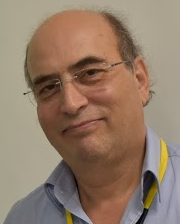
Ibrahim Abdulhalim
Ben-Gurion University of the Negev, Israel
Title: Plasmonic biosensors on demand: tunable penetration depth, compactness, ultrahigh sensitivity and enhanced spectroscopies
Biography
Biography: Ibrahim Abdulhalim
Abstract
Evanescent wave optical biosensors allow specific sensing by using a surface binding layer which enhances the capture of specific bio-entities within the nanoscale neighborhood to the sensor surface. However, this evanescence region is sometimes too small at the scale of few tens of nanometers which prevents obtaining monotonic signal versus concentration when the bio-entities are larger than the optical penetration depth. The purpose of this study is to describe methods for sensing both small (molecules, viruses, etc.) and large bioentities (cells, large molecules) using plasmonic sensors with tunable penetration depth. During the last few years, we have been developing different structural and system configurations for improving the performance of plasmonic biosensors based on improving the reading method and enhancing the local electromagnetic (EM) field further for the purpose of improving the sensitivity and lowering the detection limit based on SPR, SERS and SEF. The structural improvements include: (i) planar thin metal films combined with dielectric films, (ii) periodic metallic structures on planar substrate, (iii) nanosculptured thin films prepared by the glancing angle deposition technique. (iv) long range self-referenced plasmonic configurations, and lately, (v) combination of nanostructures with thin metal films for coupling of extended surface plasmons (ESP) to localized surface plasmons (LSP). The system improvements include: (i) diverging beam approach in the angular mode, (ii) polarimetric spectral mode, (iii) image and signal processing. Particularly, we have shown recently that even much higher enhancement of the EM fields is obtained by exciting the LSPs through extended surface plasmons generated on a semi-infinite metallic film surface. Biotechnology applications will be presented for sensing biomolecules and cells in water and in blood. In spite of the technological advances in optics, the need for developing molecular binding layer to improve the specificity is still in demand from the biotechnology community.

